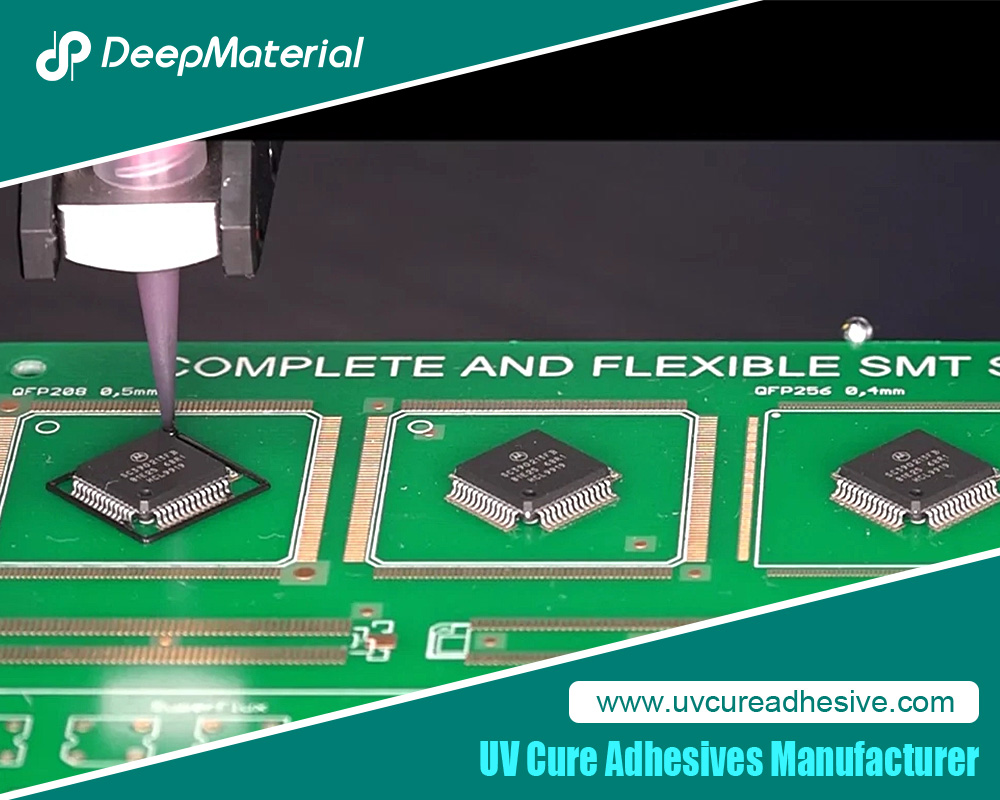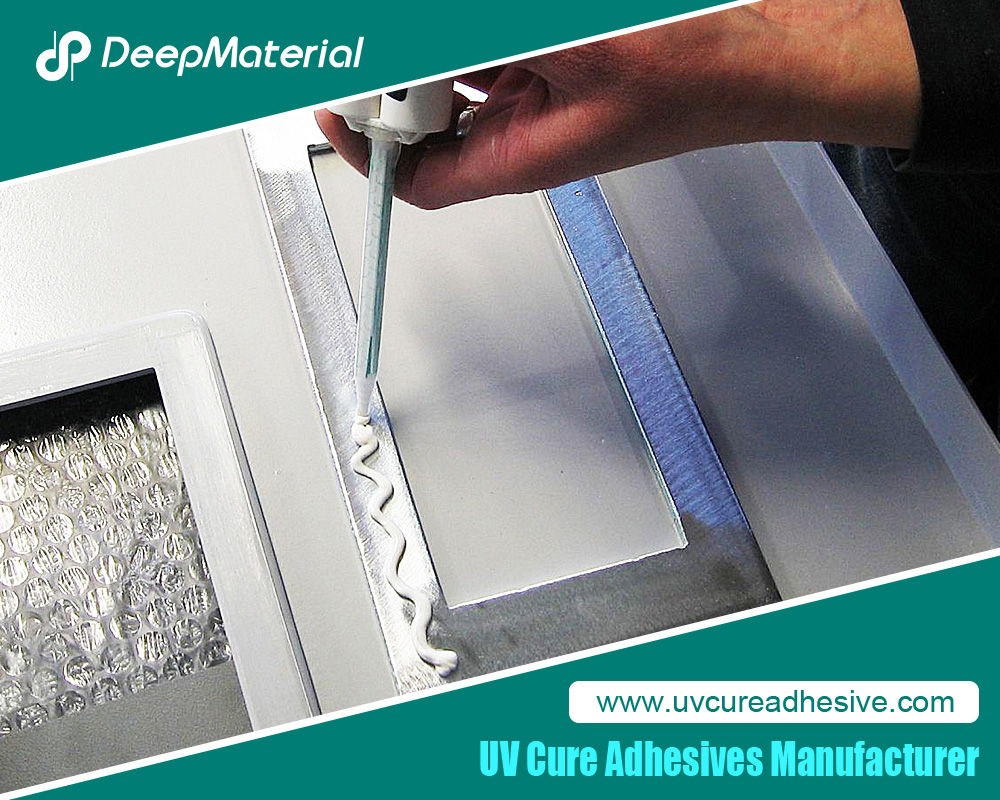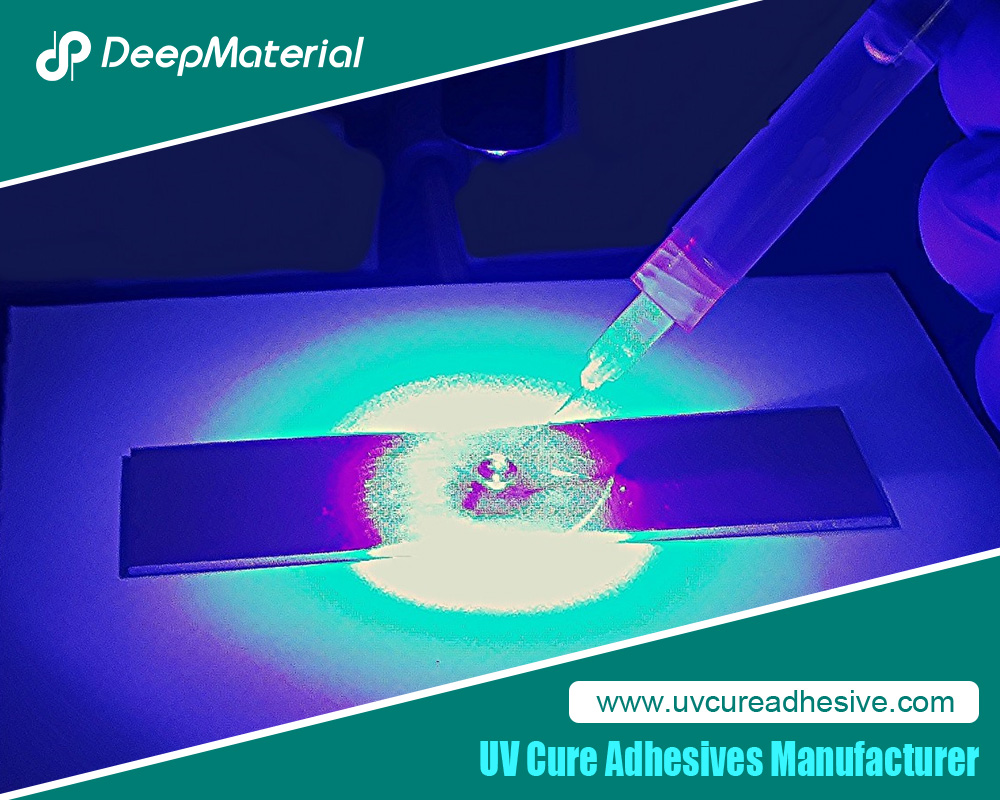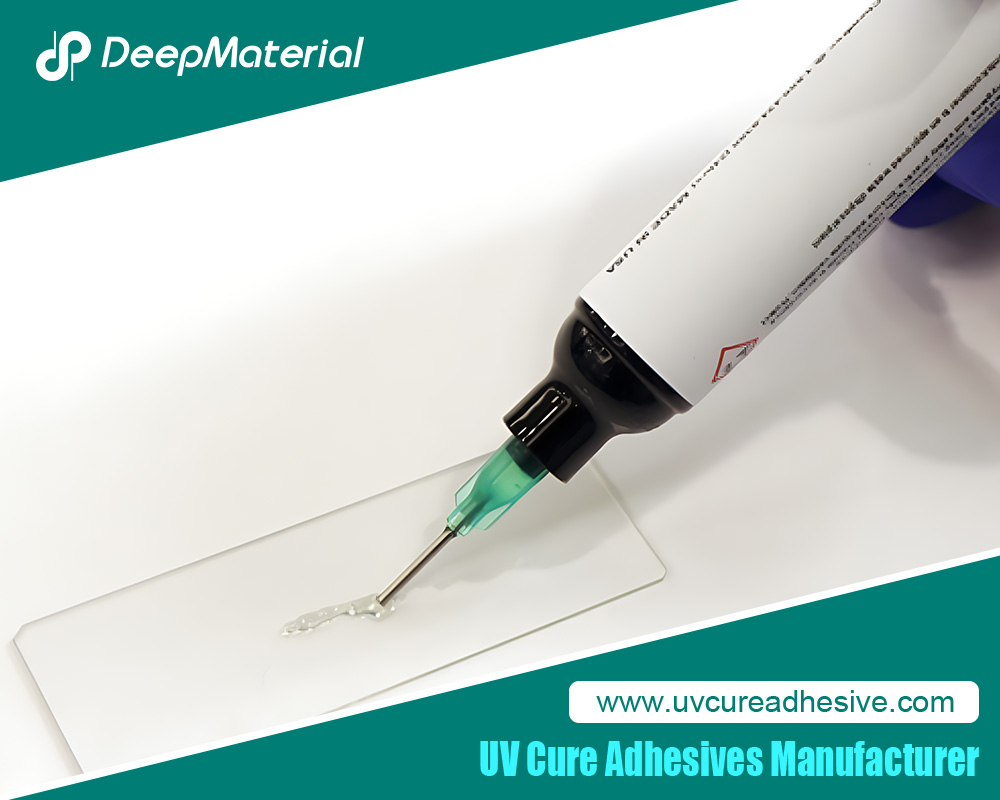Influence of Viscosity and Thixotropy of Glue on the Quality of Glue Dots in the Dispensing Process and Solutions
The dispensing process is an important part of the application of LED UV glue adhesive, and the quality of this process directly affects the final performance of the product. The physical properties of the glue, especially its viscosity and thixotropy, play a decisive role in the dispensing process. A correct understanding and control of these properties are crucial for obtaining ideal glue dot shapes and precise positions.
Basic Concepts of Viscosity and Thixotropy
1. Viscosity
Viscosity is a physical quantity that measures the ability of a fluid to resist flow, usually expressed in pascal-seconds (Pa·s) or centipoises (cP). For LED UV glue adhesive, the viscosity is affected by temperature, the composition of the glue (such as resin, solvent, filler, etc.), and additives. Generally speaking, as the temperature increases, the viscosity of the glue decreases; while an increase in the resin content will lead to an increase in viscosity.
2. Thixotropy
Thixotropy refers to the property of a fluid in which its viscosity decreases and its fluidity increases when subjected to a shear force, and the viscosity gradually recovers when the shear force is removed. This property makes the glue easier to flow during the dispensing process and can quickly maintain its shape after dispensing to prevent deformation and flowing. Thixotropy is mainly adjusted by additives such as thickeners and thixotropic agents in the glue formula.
Influence Mechanisms of Viscosity and Thixotropy on the Shape and Positional Accuracy of Glue Dots
1. Influence of Viscosity
1.1 Shape of Glue Dots
- High-viscosity glue: It has poor fluidity, and it is difficult for the glue to be extruded from the needle during dispensing. It is likely to form glue dots with a small volume and a relatively high height. Due to the slow flow, the edges of the glue dots may be uneven, and even stringing phenomena may occur.
- Low-viscosity glue: It has good fluidity, and the glue is likely to spread during dispensing, resulting in glue dots with a large volume and a relatively low height. On the substrate surface, the low-viscosity glue may spread excessively, affecting the regularity of the glue dot shape.
1.2 Positional Accuracy
- High-viscosity glue: Due to the large extrusion resistance, the response speed of the glue at the needle is slow, and dispensing lag is likely to occur, resulting in the deviation of the position of the glue dot. This problem is more obvious during high-speed dispensing.
- Low-viscosity glue: The fluidity of the glue on the substrate is strong. Even if the dispensing position is accurate, it may deviate from the predetermined position due to spreading, affecting the positional accuracy.
2. Influence of Thixotropy
2.1 Shape of Glue Dots
Good thixotropy can reduce the viscosity of the glue at the moment of dispensing, allowing the glue to be smoothly extruded to form a glue dot. After dispensing, the viscosity of the glue recovers rapidly to prevent the deformation and collapse of the glue dot, which is helpful for forming a glue dot with a regular shape and a neat edge. If the thixotropy is insufficient, the glue may continue to flow after dispensing, resulting in the out-of-control of the glue dot shape. However, if the thixotropy is too strong, the glue may not flow sufficiently during the dispensing process, affecting the integrity of the glue dot.
2.2 Positional Accuracy
The glue with appropriate thixotropy can quickly stabilize its shape after dispensing, reducing the positional deviation caused by the flow of the glue. For the glue with poor thixotropy, its position may change due to continuous flow after dispensing, reducing the positional accuracy of dispensing.
Causes of Stringing and Tailing Problems
1. Viscosity Factors
- Excessively high viscosity: The cohesive force of the glue at the needle is too large. After dispensing, the glue cannot be separated from the needle in time, thus forming stringing. As the needle moves, the stringing phenomenon intensifies, and even tailing may occur.
- Excessively low viscosity: The glue is likely to drip during the dispensing process. After dispensing, due to the strong fluidity of the glue, the remaining glue will continue to flow downward, forming tailing.
2. Thixotropy Factors
- Insufficient thixotropy: After dispensing, the viscosity of the glue recovers slowly. Under the action of gravity and surface tension, the glue continues to flow, resulting in stringing and tailing.
- Excessively strong thixotropy: The fluidity of the glue is poor during the dispensing process, and it may accumulate at the needle. After dispensing, the accumulated glue is likely to form stringing when it is separated from the needle.
3. Dispensing Process Parameter Factors
- Dispensing pressure: If the pressure is too high, the glue is extruded too quickly. After dispensing, it is difficult to control the excess glue, and stringing and tailing are likely to occur. If the pressure is too low, the glue is not extruded smoothly, which may lead to incomplete glue dots and stringing in the subsequent process.
- Dispensing speed: If the speed is too fast, the response of the glue at the needle cannot keep up, and stringing is likely to occur. If the speed is too slow, the glue stays at the needle for too long, and tailing may occur due to the action of gravity or surface tension.
- Needle size: If the inner diameter of the needle is too small, the extrusion resistance of the glue is large, and stringing is likely to occur. If the inner diameter of the needle is too large, it is difficult to precisely control the glue flow, which may lead to too large glue dots and tailing.
Solutions to Avoid Stringing and Tailing Problems
1. Optimize the Glue Formula
- Adjust the viscosity: According to the requirements of the dispensing process, reasonably adjust the proportions of resin, solvent, and filler in the glue formula to control the viscosity of the glue within an appropriate range. For high-precision dispensing, the viscosity can be appropriately reduced to improve the fluidity of the glue. For applications with high requirements for the shape of the glue dots, the viscosity can be appropriately increased to enhance the ability of the glue to maintain its shape.
- Improve thixotropy: Add appropriate thixotropic agents, such as fumed silica, bentonite, etc., to optimize the thixotropic properties of the glue. Determine the type and amount of the thixotropic agent through experiments to make the glue have good fluidity during the dispensing process and quickly recover its viscosity after dispensing.
2. Optimize the Dispensing Process Parameters
- Dispensing pressure: According to the viscosity of the glue and the requirements for the dispensing amount, precisely adjust the dispensing pressure. On the premise of ensuring the smooth extrusion of the glue, try to reduce the pressure to minimize the excessive extrusion of the glue. For different batches of glue, since the viscosity may vary, the dispensing pressure needs to be readjusted.
- Dispensing speed: Select an appropriate dispensing speed in combination with the thixotropy and viscosity of the glue. Generally speaking, for high-viscosity glue, the dispensing speed should be appropriately reduced; for low-viscosity glue, the dispensing speed can be appropriately increased, but avoid the splashing of the glue caused by too fast a speed.
- Needle selection: Select a needle with an appropriate inner diameter according to the size and shape requirements of the glue dots. For small glue dots, a needle with a smaller inner diameter should be selected; for large glue dots, a needle with a larger inner diameter can be selected. At the same time, pay attention to the material and surface finish of the needle to avoid stringing of the glue caused by needle problems.
3. Adopt Auxiliary Technologies
- Suction-back technology: At the end of dispensing, use the suction-back function of the dispensing equipment to suck back the excess glue in the needle to prevent the glue from continuing to flow out and reduce the phenomena of stringing and tailing.
- Heating assistance: Appropriately heat the glue or the substrate to reduce the viscosity of the glue and improve its fluidity, which is helpful to reduce stringing and tailing. However, pay attention to controlling the heating temperature to avoid affecting the performance of the glue.
- Electrostatic assistance: Use the electrostatic effect to electrostatically adsorb or repel the glue to control the flow direction and shape of the glue and reduce stringing and tailing.
Conclusion
In the dispensing process of LED UV glue adhesive, the viscosity and thixotropy of the glue have an important influence on the shape and positional accuracy of the glue dots, and they are also key factors leading to problems such as stringing and tailing. By optimizing the glue formula, adjusting the dispensing process parameters, and adopting auxiliary technologies, the dispensing quality can be effectively improved, ideal glue dot shapes and precise positional accuracies can be obtained, and thus the overall performance and production efficiency of the product can be enhanced. In actual production, according to specific application requirements and glue characteristics, various methods need to be comprehensively used to continuously optimize the dispensing process to meet the increasingly stringent production requirements.
For more about influence of viscosity and thixotropy of glue on the quality of glue dots in the dispensing process and solutions, you can pay a visit to DeepMaterial at https://www.uvcureadhesive.com/ for more info.





